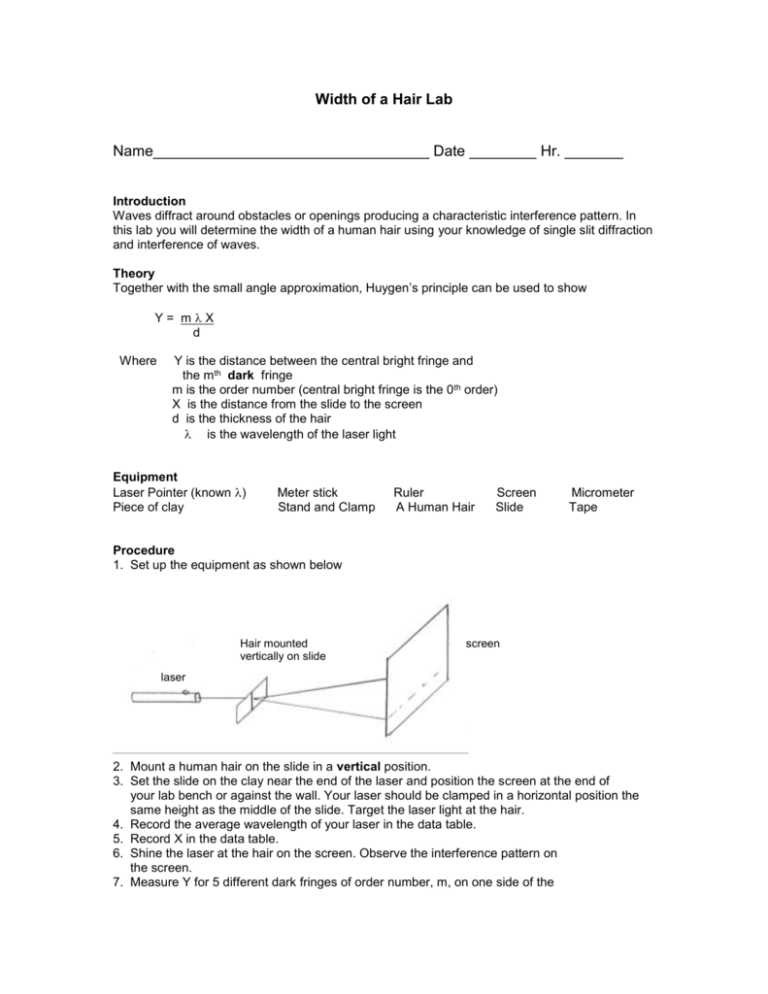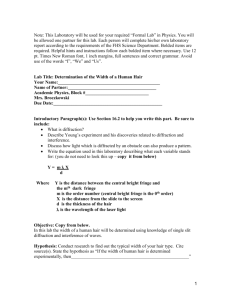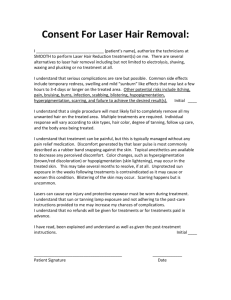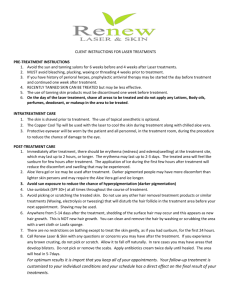Width of a Hair Lab
advertisement

Width of a Hair Lab Name_________________________________ Date ________ Hr. _______ Introduction Waves diffract around obstacles or openings producing a characteristic interference pattern. In this lab you will determine the width of a human hair using your knowledge of single slit diffraction and interference of waves. Theory Together with the small angle approximation, Huygen’s principle can be used to show Y= mX d Where Y is the distance between the central bright fringe and the mth dark fringe m is the order number (central bright fringe is the 0th order) X is the distance from the slide to the screen d is the thickness of the hair is the wavelength of the laser light Equipment Laser Pointer (known ) Piece of clay Meter stick Stand and Clamp Ruler A Human Hair Screen Slide Micrometer Tape Procedure 1. Set up the equipment as shown below Hair mounted vertically on slide screen laser 2. Mount a human hair on the slide in a vertical position. 3. Set the slide on the clay near the end of the laser and position the screen at the end of your lab bench or against the wall. Your laser should be clamped in a horizontal position the same height as the middle of the slide. Target the laser light at the hair. 4. Record the average wavelength of your laser in the data table. 5. Record X in the data table. 6. Shine the laser at the hair on the screen. Observe the interference pattern on the screen. 7. Measure Y for 5 different dark fringes of order number, m, on one side of the bright central fringe. Record m and Y in the data table for each dark fringe. Data Table = ___________________ X = __________________ m 1 2 3 4 5 Y (m) d (m) Average Analysis 1. Solve for d for each value of m in the data table. Record in the data table. Show an example calculation (full work) for m = 1 below. Example Calc: 2. Average the five values for d and record in the table. 3. Determine the absolute uncertainty in your measurement of the thickness of the hair. Work: d = _____________ 4. Try to measure the thickness of your hair with a micrometer. How does this compare with your diffraction measurement? Micrometer measurement __________________ 5. Which is more precise, the diffraction measurement or the micrometer measurement? Support your answer by describing sources of uncertainty in each measurement






